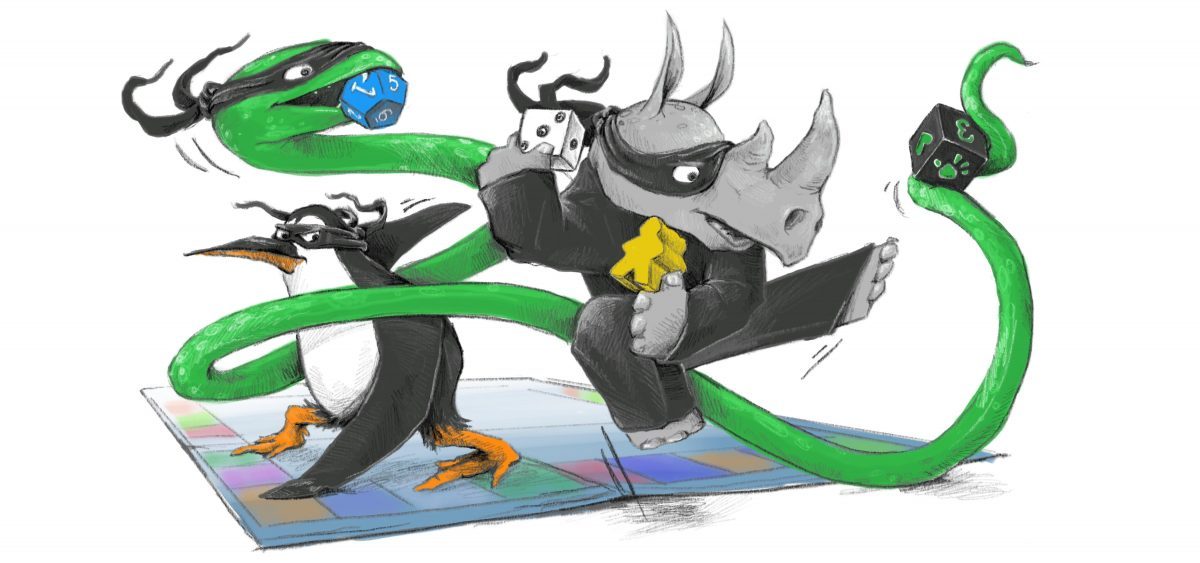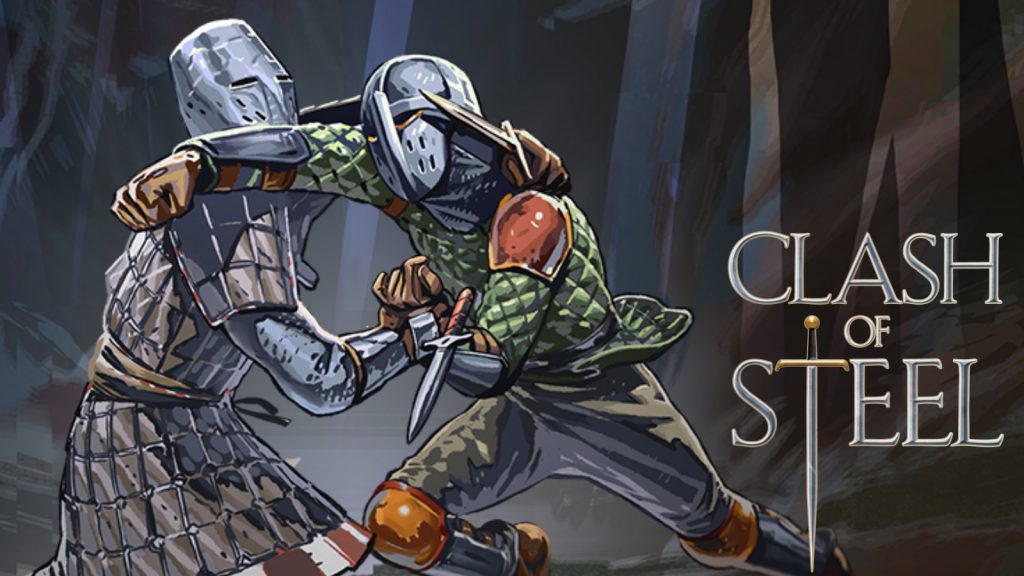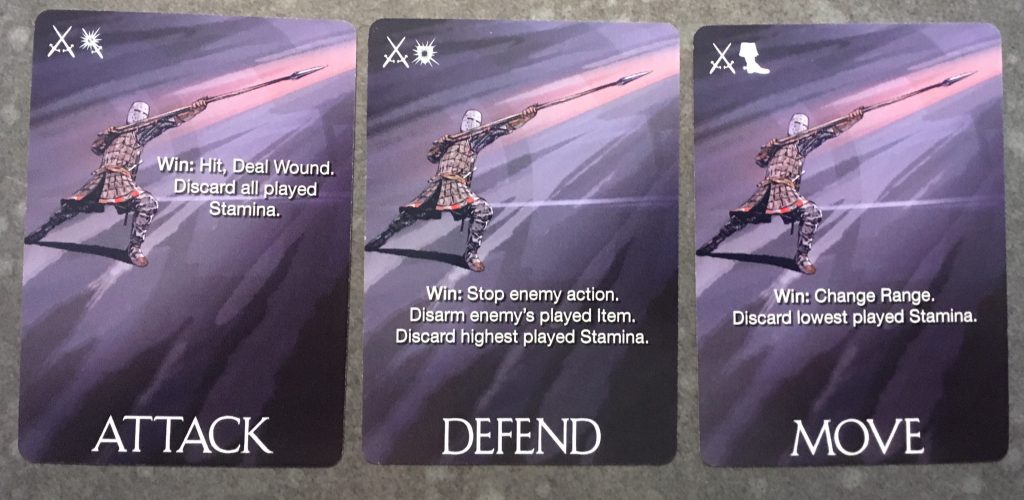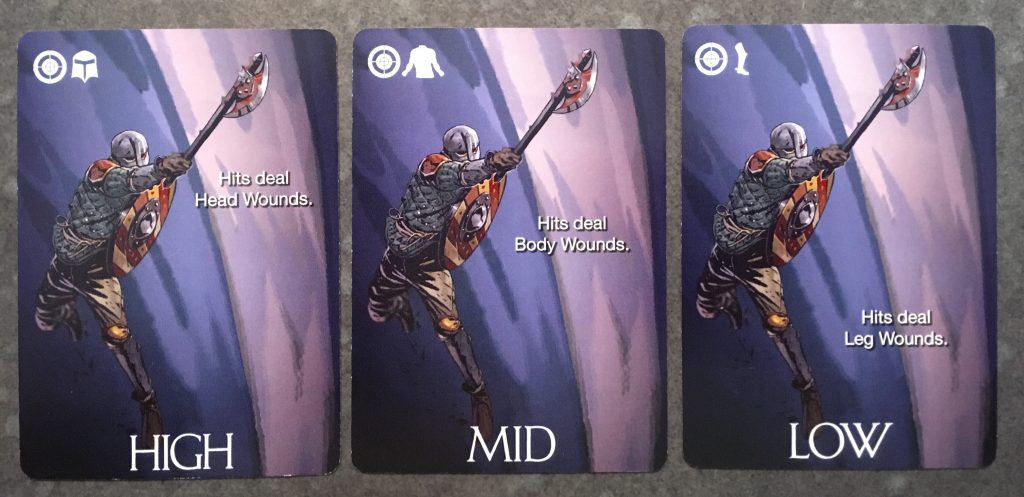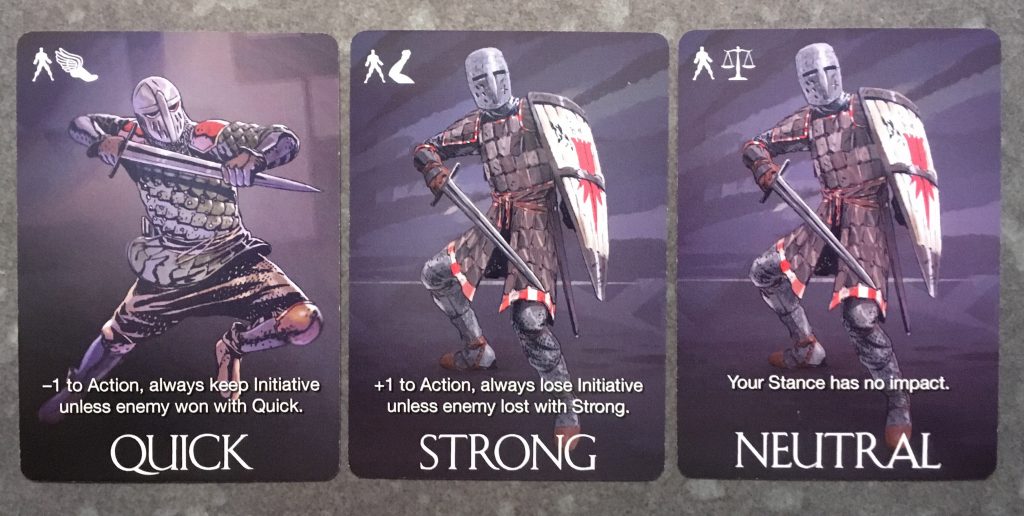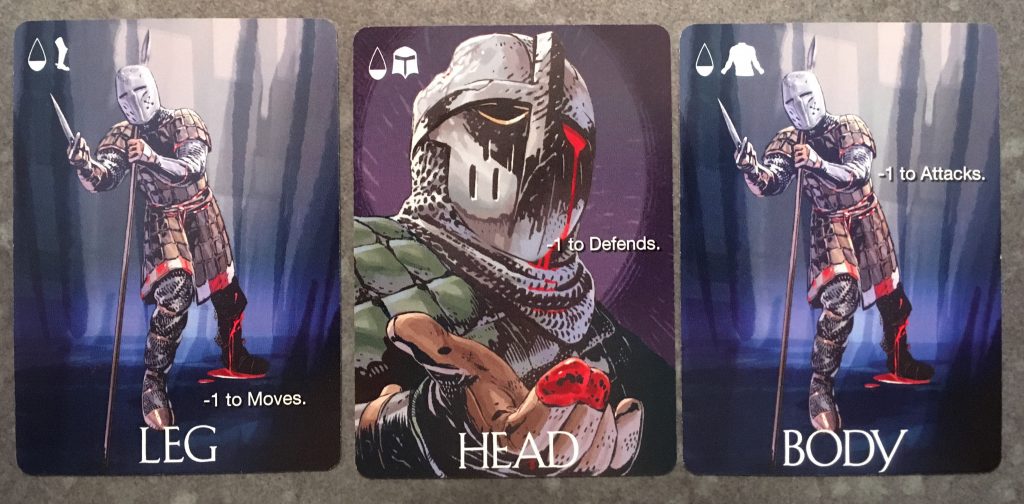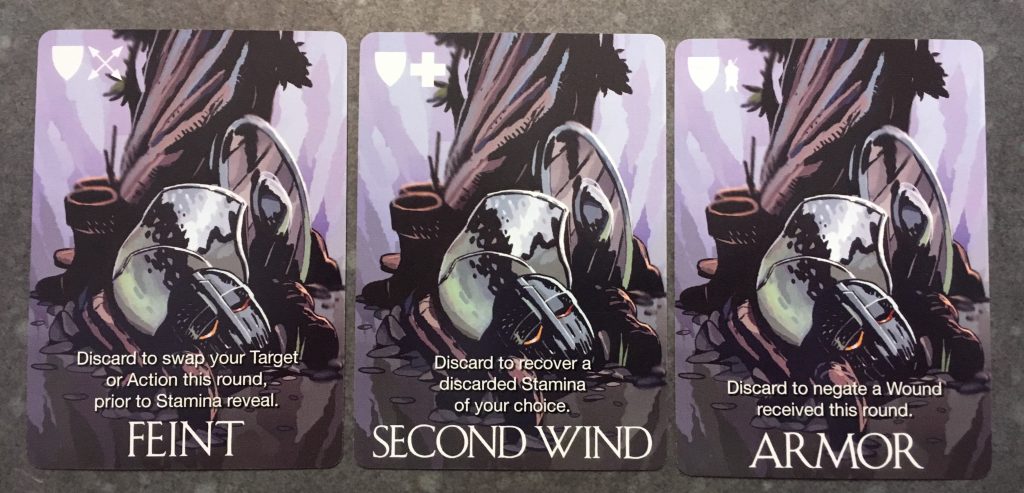Clash of Steel is a 2 player battle card game. Normally that is not my style because usually 2 player battle type games involve a whole lot of deck building and tons of text on every card, and…that’s when I stop paying attention. Like I said, not my style. Thankfully this is not that game.
Clash of Steel is a game that you can learn in about 5 minutes, and the cards are always the same, so there’s no spending time building a deck. And, the actions of each card are relatively simple, so there’s not a lot of time spent deliberating on which cards to play.
But that doesn’t mean that there aren’t a lot of choices. There are.
Let’s look at the gameplay:
There are lots of different card types in the game (but don’t worry, it’s actually not that complicated).
Stamina cards. These are the cards you use to determine how powerful your attacks are, and the cards you use to bid on the Starting Initiative. The cards range from 1-5 and there are three of each in the deck. When one player runs out of Stamina, they lose.
Item cards. These are your weapons and shield. There are five of these and you get to choose 2 of them to use for the entire game. Each one gives bonuses based on whether you are Attacking, Defending or Moving, and based on the current Range of the battle.
 Action cards. These cards are the ones you use to declare what you are doing during each round of the battle. Attack cards let you cause damage to your opponent if you win the round. Defend cards block the Attacks of your opponents if you win the round. Move cards allow you to change the Range of the battle to one that is more advantageous to you (based on the Item cards you chose at the beginning of the game). Your action cards also have an effect if you do not win the round, but the effect is negative.
Action cards. These cards are the ones you use to declare what you are doing during each round of the battle. Attack cards let you cause damage to your opponent if you win the round. Defend cards block the Attacks of your opponents if you win the round. Move cards allow you to change the Range of the battle to one that is more advantageous to you (based on the Item cards you chose at the beginning of the game). Your action cards also have an effect if you do not win the round, but the effect is negative.
Target cards. These cards allow you to choose the part of your opponents body that you will attempt to Attack or Defend against there attack on that part of your body. If you are Defending and choose the same target as your attacker, you gain a bonus to your Defense (which makes sense since you knew where they were going to attack).
Stance cards have to do with Initiative, and can effect your Action as well. Quick lets you keep Initiative, but gives you -1 to your Action total. Strong loses Initiative, but gives you +1 to your Action total. Neutral does nothing.
Wound cards. These cards are penalties that you get when you lose the round and your opponent was Attacking. Basically their strike gets through and you are wounded. Wounds either give you a -1 to your Attack, Defense, or Move.
Maneuver cards. These cards allow you to overcome one bad round, or reverse a bad choice. Feint lets you change a Target card or Action card right before the Stamina cards are revealed. Second Wind cards let you recover one Stamina card that you have previously discarded. Armor lets you heal a wound that you have taken during a previous round. You get to choose one of these cards at the beginning of the game and they can only be used once.
The are 2 other kinds of cards, which are shared between the 2 players. The Range cards which provide bonuses or penalties when paired with certain Action cards, and the Initiative card which determines which player has the Initiative for the round.
Wow, that sounds like a lot of card types, but it really is a lot simpler than it seems.
At the beginning of the game you select 2 Items to use, and 1 Maneuver to use (not showing to your opponent). You then each use Stamina cards to bid on who will get Initiative for the first round.
Each round both players will choose 1 Stance card, 1 Item card, 1 Action card, 1 Target card, and 1 or 2 Stamina cards to play.
The player with Initiative gets to decide which of the cards are played face up (opponent’s first, then theirs) and which cards are left face down until all are played. Stamina cards are always left face down until the end. Whoever’s total (Stamina +modifiers) is higher wins the round.
Whoever wins gets to complete their action. Penalties for the losing player can include one or more of the following: taking a wound, losing stamina cards from their hand or discarding their Item. This part is thoroughly explained in the rules but you pick up on it really quick when playing. All players then discard all Stamina cards they played that round.
Again, if I was sitting in front of you explaining it, it would be much simpler.
Thoughts. The gameplay for this one is really simple once you get the hang of it (and it doesn’t actually take more than 5 minutes to learn). One of the best parts of the game is that it is in no way based on luck. There is no randomness built into the game. Both players start with the same cards, and the direction that the game takes is completely dependent upon the choices that you make, both at the beginning of the game and during the normal course of the game.
The Initiative feature of the game is particularly interesting and important. Initiative allows you to control the flow of the round somewhat. If you have Initiative, you can choose to see their Stance and Action to determine what you want to do, but not see their Item and Target because you want to keep yours secret until all cards have been chosen. This allows you to attempt to fake out or bluff your opponent and maybe gain an advantage. Winning the Opening Initiative bid is important, but not critical.
In fact, the entire game is very balanced. If you have a bad round, the Maneuver cards will allow you to get back in the game. The Armor card allows you to heal a wound. The Second Wind card allows you to recover a Stamina card from the discard pile (probably a 5). The Feint card allows you to change a Target or Action card right before you reveal the Stamina cards (which can overcome the advantage of Initiative. The Wound cards give you a -1 to Attack, Defend or Move, but are not completely debilitating. They will change to way the game plays, but you can overcome them with a Maneuver card or by injuring the other player and causing them to have a Wound as well.
Card counters can have a bit of advantage, if for instance you know that your opponent no longer has any 4s or 5s left in their hand. But that is balanced somewhat by the fact that you can play more than one Stamina card per round.
I really felt that no matter how far behind I fell in the game I could still have a chance at coming back. When one player gets far ahead, it is usually because they have used a fair amount of their high Stamina cards, which means the opponent that is behind probably has their high cards left. The only negative to this was that occasionally the game went on for a little too long (but that was rare). Usually we were done in about ten minutes.
The only thing we felt strange about was the Items. It seemed weird that you couldn’t use a Spear and a Shield (Maybe there should be 2 handed weapons?) Anyway that was a minor weirdness that didn’t take away from the gameplay.
Clash of Steel is really a solid game. It is well balanced and the gameplay is streamlined and quick. There is a great deal of replayability and tons of strategy built in. The bluffing that comes when you are choosing your cards before the battle begins is great. The artwork is solid (with more unique card art to come), and the game is nice and compact, allowing it to travel really well. And, it doesn’t take very long to learn or play, making it a really good game to start off Game Night or end it.
Overall, Clash of Steel is really well done. It takes a Rock Paper Scissors feeling and ups it to an actual strategic duel. The lack of randomness is particularly nice, and allows for you to become better at the game the more you play it, but the learning curve is not so steep that it negatively effects new players.
A really solid game.
Sigil Stone Publishing sent us a copy of Clash of Steel in exchange for an honest review, which is exactly what we provided.
